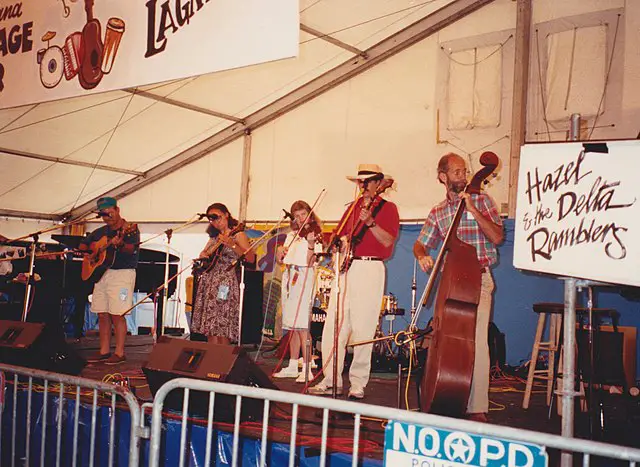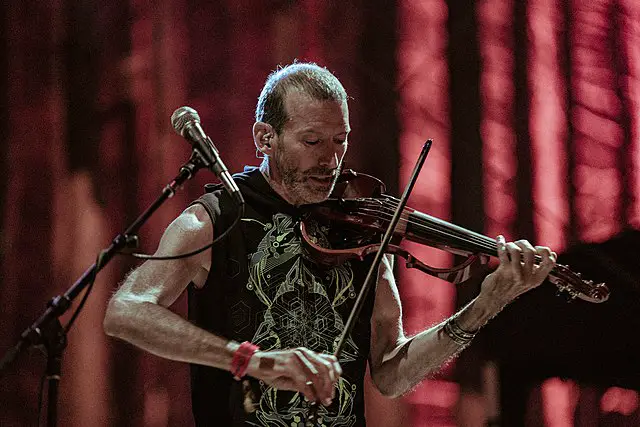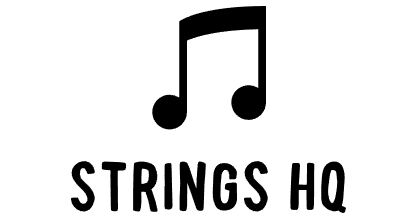Jazz music is one of the most limitless genres of music out there. It’s also one that combines a wide range of instruments.
We traditionally associate the saxophone and double bass with Jazz, but are violins used in Jazz music? Let’s discuss the relationship between the Violin and Jazz.
Here’s whether Violins are Used in Jazz:
Violins are versatile instruments that can be used in many genres of music. Most, but not all, types of violins can be used in Jazz.
Whether classic or electric, Violins are a welcome addition to Jazz concerts, making them seen in almost every Jazz violin group nowadays.
Table of Contents
Is the Violin a Common Instrument in a Jazz Ensemble?
Not only can violins be used in Jazz ensembles, but they will also enhance the performance considerably if the violinist knows what they’re doing.
Would violins be considered “common” in Jazz ensembles, though?
Jazz violin began back in the 1900s in New Orleans. Using a violin in Jazz ensembles was very popular back then.
However, its popularity decreased noticeably throughout the years as people’s focus shifted more towards classic violin groups rather than solo Jazz performers.
In 1980, electric violins became advanced enough to put the Jazz violin back in the spotlight. To this day, the violin’s popularity has been increasing, and it has become common to see violins in Jazz musical concerts.
Check out this image of a string orientated Jazz Ensemble:

What Is the Violin’s Role in Jazz?
Jazz is considered to be a broader genre of music than most others. You can hear so many different tones that normally shouldn’t belong to the same music genre. But in the case of Jazz, that’s the norm.
Jazz has a heavy emphasis on improvisation. Louis Armstrong, a Jazz violin pioneer, was known to improvise on stage in a manner so sophisticated that his peers would almost stop playing music while he performs.
A violin (whether normal or electric) is a perfect musical instrument for said improvisation. Its array of sounds, especially with a fifth string, grants violinists a wide range of possibilities.
Additionally, a violin is one of the few musical instruments that can be carried around conveniently while playing. This accounts for greater credibility to the performer as they display their body language to sync with the music.
What Kinds of Jazz Work Well With the Violin?
There are many Jazz subgenres. We have early Jazz, Cool Jazz, Gypsy Jazz, Smooth Jazz, Jazz Fusion, Modern Jazz, and many more.
To say that violins work well with a limited selection of Jazz types would be unjust. Generally, a violin can be used with any sort of Jazz. However, violins shine more with some Jazz types than others.
For example, swing, continental Jazz, and Gypsy Jazz were the genres of choice for Stephane Grapelli, one of the greatest jazz violinists of all time.
Grapelli demonstrated how a violin solo improvisation can enrich a performance, especially with continental Jazz.
Jean-Luc Ponty is another Jazz pioneer who demonstrated how a violin can steal the light in a Jazz Fusion concert.
How to Play Jazz Violin?
Any classic violin performer can play Jazz violin with some minor changes. Here are some points to consider:
Improvisation
You need to have the ability to improvise. Unlike the classic violin, you aren’t given a score that you memorize and play.
It’s not solely improvisation, of course. Some Jazz violin performers don’t improvise at all in some concerts. But improvising is a strong judging point to spot a talented Jazz violinist.
Solo Performing
When playing in a classic violin ensemble, you need to be very capable with your violin strings to produce the right sounds. But when performing a solo in Jazz violin, you need to be extra careful.
Standing up, apart from your band, directly in front of the audience isn’t something any violinist can do. You need to be confident in your body language and your performing capability.
As a solo performer, mistakes aren’t as easily unnoticed as when you perform in a group.
Handling the Electric Violin
You can still use a classic violin for a Jazz violin performance, but musicians now opt for electric violins for their crispier and richer sound quality.
Classic violins and electric violins are held the same way, but the strings are toned slightly differently and they need some practice to get used to.
Additionally, it’s very common for electric violins to have a fifth string. This enables the performer to produce a richer sound experience, but at the cost of more practice to utilize that extra string.
Here’s a great introductory lesson to playing Jazz on the Violin:
What Is the Difference Between a Jazz Violin and a Normal Violin?
Normal violin performance is when a group of violinists is playing to create music. Typically, they are always playing in the background as ambiance or support to the musical piece.
In such a performance, the violinists are almost always contributing to the score, but they don’t get a special part in the play where they are the main sound producers.
Jazz violin performance is a different story. Whether it’s a classic violin or an electric one, Jazz violinists get their own time to shine during the play.
In Jazz violin, the background music is toned down to allow for a solo violin performer to show off his or her skills in improvising solo lines.
The music in the background never shuts down entirely, but it’s lowered to a point where most of the musical experience comes from a single performer on the stage.
What Is an Electric Violin?
An electric violin is more or less a normal violin but with the addition of electro-acoustic components. They’re both used similarly when it comes to handling, pulling strings, and creating music in general.
The difference is that an electric violin doesn’t have the usual acoustic soundbox that a normal violin has. Instead, electric violins switched the soundbox for a pickup so that they can be amplified electrically. Also, most electric violins have a 5th string that allows for a wider range of notes.
When you play a normal violin, the vibrations of the string are gathered and modified inside the open chamber (soundbox) of the violin. The air inside this soundbox vibrates in the same frequency as the strings, which eventually creates an audible sound.
In the case of an electric violin, the pickup device converts the same string vibrations into an electrical signal. This signal is then transferred to various sound devices.
Once a signal is generated from an electric violin, you can use an external device to amplify it, tune it, louden it, or dampen it. This creates the possibility for a much crispier sound experience than you can get from a normal violin.
Note that the pickup itself could sometimes dampen the vibrations while trying to purify the sound. This could lead to a muted sound.
Because of that, background performers are usually instructed to maintain a minimum level of background ambiance to reduce the sound quality loss as much as possible.

Are Electric Violins Used in Jazz?
Jazz violin was invented based on electric violins – Electric Violins are absolutely used in many varieties of Jazz. Electric Violins offer a variety in sound production compared with the traditional violin which is valuable for Jazz ensembles.
Nowadays, electric violins are slowly becoming the heart and soul of the Jazz violin. The more advanced technology gets, the more attention electric violins get.
What Famous Jazz Musicians Use Violins?
Many famous musicians performed Jazz violin. Here are two of the most popular ones:
Giuseppe Venuti
Giuseppe “Joe” Venuti was one of the Jazz violin pioneers. Joe Was born in 1903 in Pennsylvania, USA.
He fell in love with violins when he was a child, and spent his years perfecting its art. His first professional performance was in 1924. Some people consider him the father of the jazz violin.
His playstyle was rhythmic and fast, with patterns of duplets and running eighth and sixteenth notes.
The exact age of Joe Venuti is not known. As he used to give conflicting information regarding his birth year. At the time of his death, his expected age ranges between 72 and 84.
Jean Reinhardt
Jean “Django” Reinhardt was born in 1910 in Liberchies, Belgium. He was a composer, guitarist, and violinist.
Django was one of the first major talents to appear in Europe and was one of the biggest cornerstones at the time.
He was initially a guitarist, but he was introduced to American Jazz by a French Photographer named Emile Savitry. He was then fascinated by the Jazz violin and started playing the violin along with the guitar.
On May 16th, 1953, Jean collapsed near his house. It took a whole day for a doctor to reach him. That’s when he was declared dead at the young age of 43.
Who Is the Greatest Jazz Violinist?
Stephane Grappelli is arguably the greatest Jazz violinist of all time. The French-Italian artist was born in January 1908.
He formed the Quintette du Hot Club de France along with Django Reinhardt. This club was one of the first Jazz bands to exist at the time.
Grappelli learned most of his Jazz violin art independently, which is one of the reasons why his playing style was unique. His (hot) swing playstyle made him a legend in the world of Jazz.
He parted ways with us on December 1st, 1997 in the Church of Saint Vincent de Paul where he was born 89 years earlier.
Final Thoughts
Are violins used in Jazz music? The answer is yes. Both classic and electric violins can be used in Jazz. In fact, violins are seen in virtually all Jazz ensembles nowadays.
In Jazz, violins are used mainly for improvisations, which is one of the key aspects of this genre of music.
